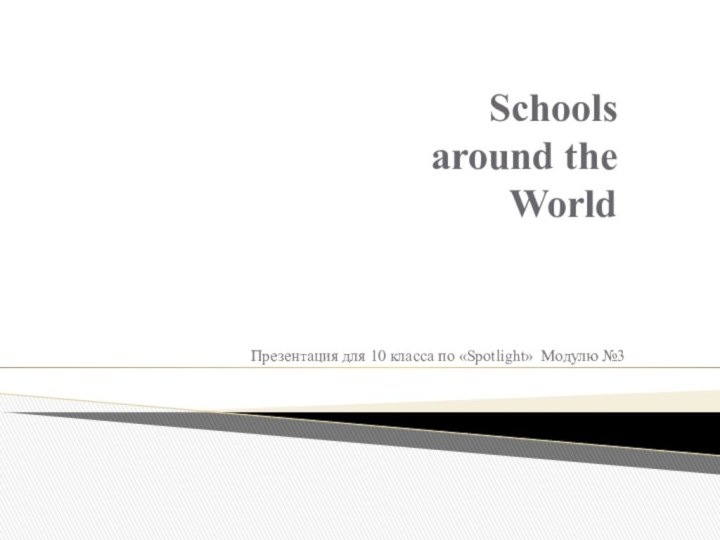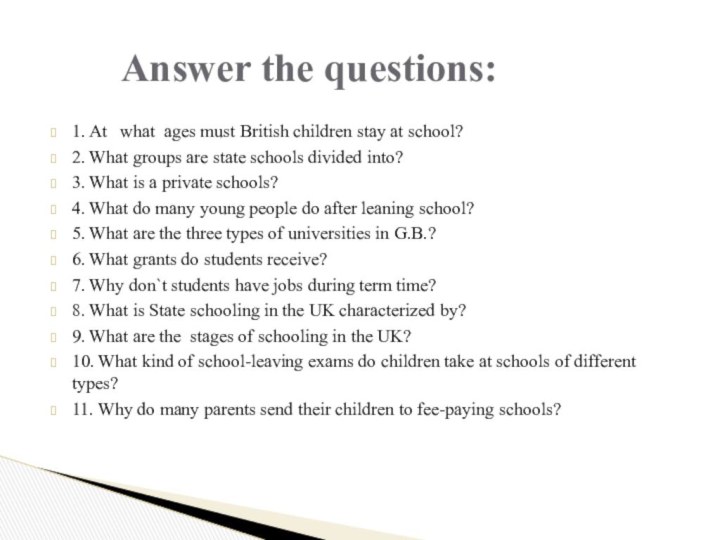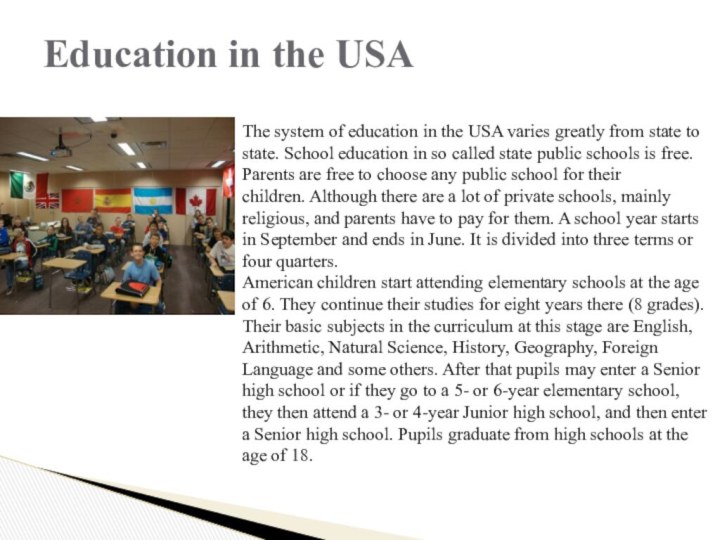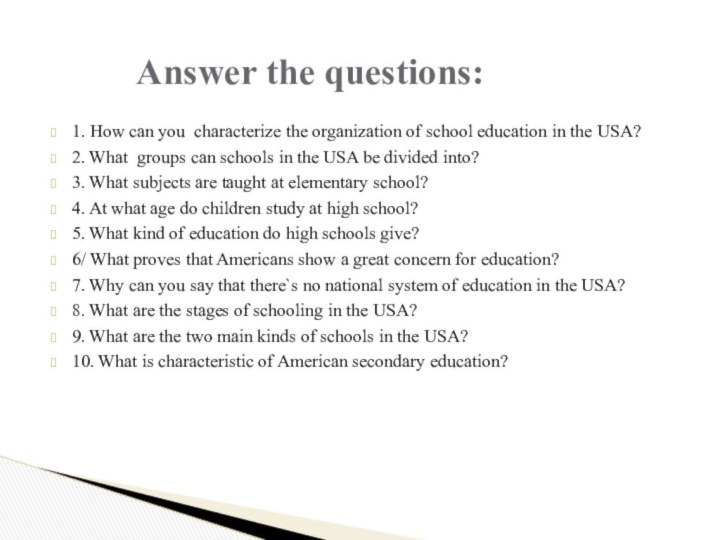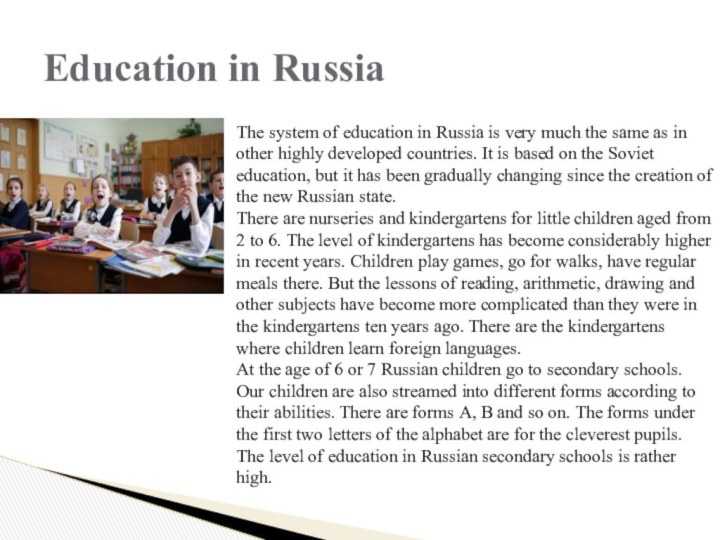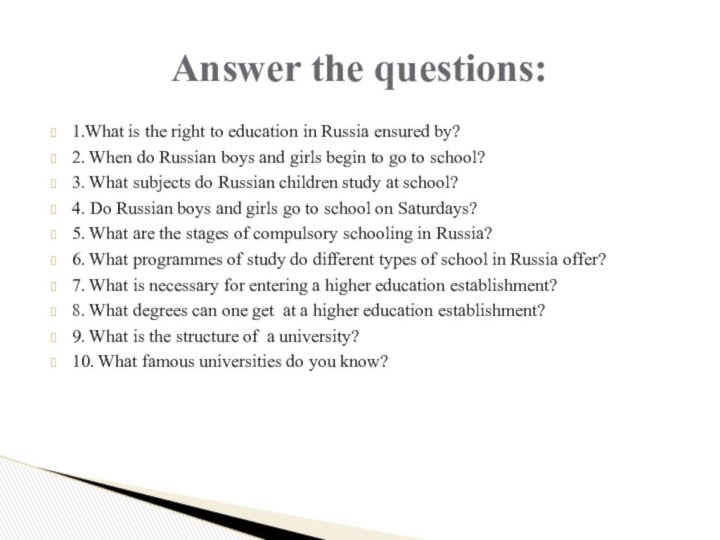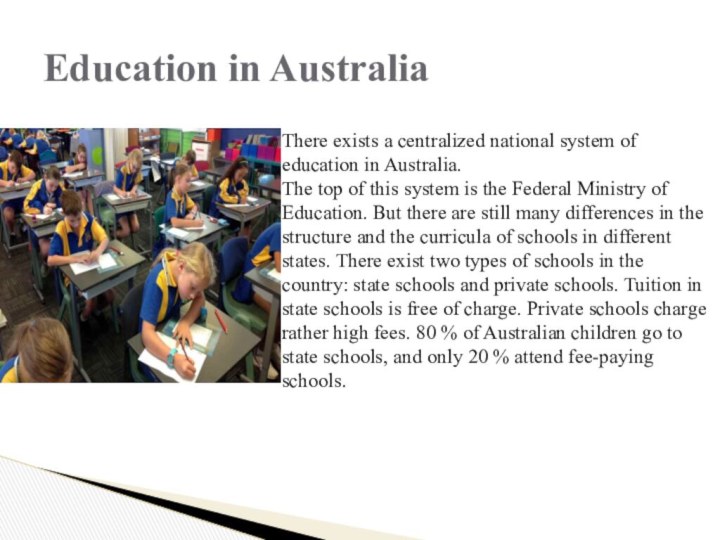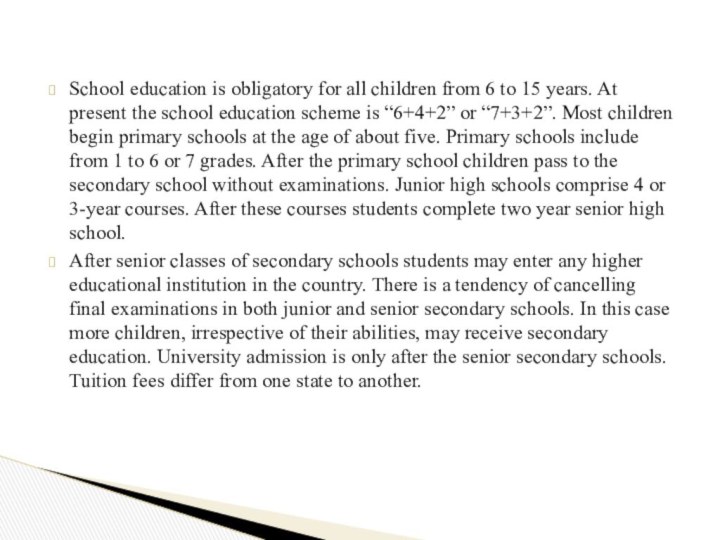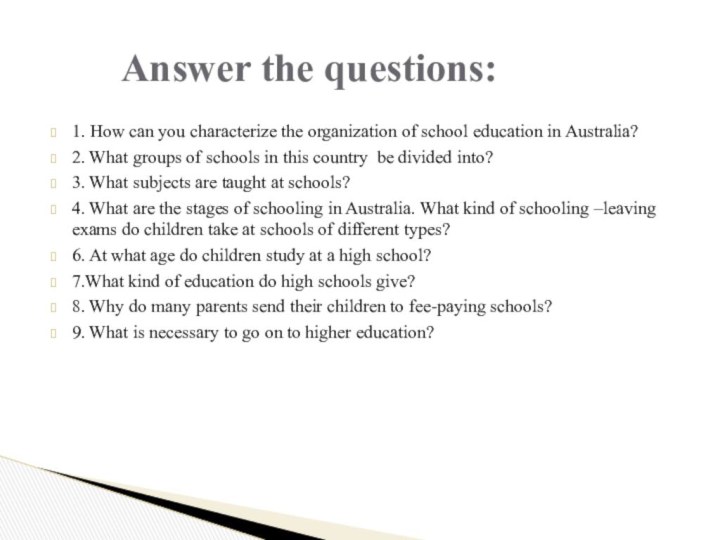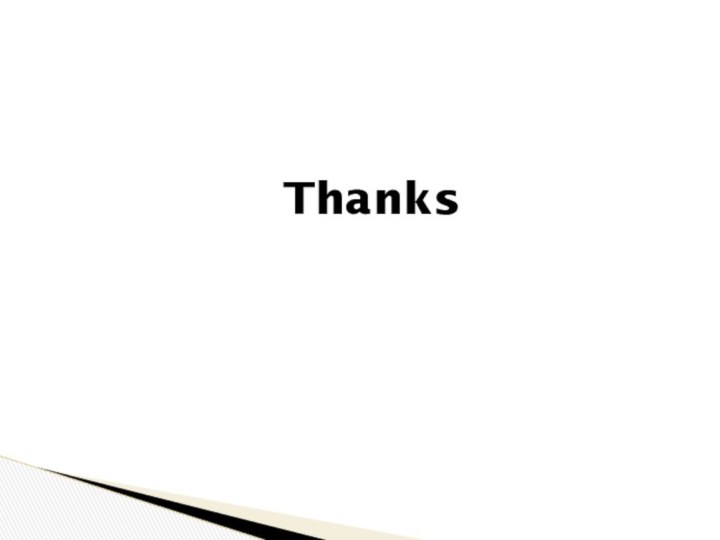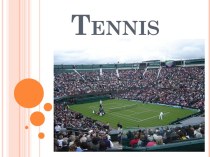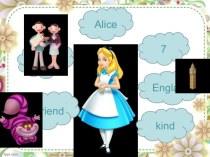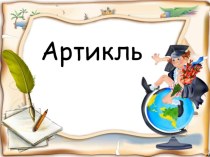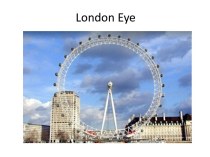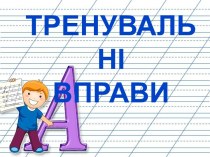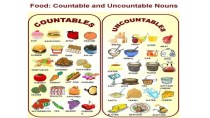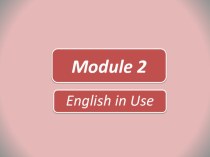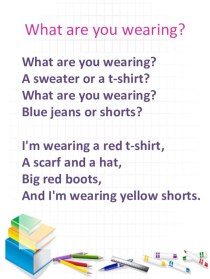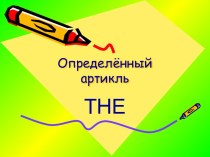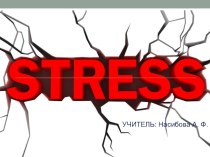Слайд 2
Education in Britain
Education in Britain is compulsory and free
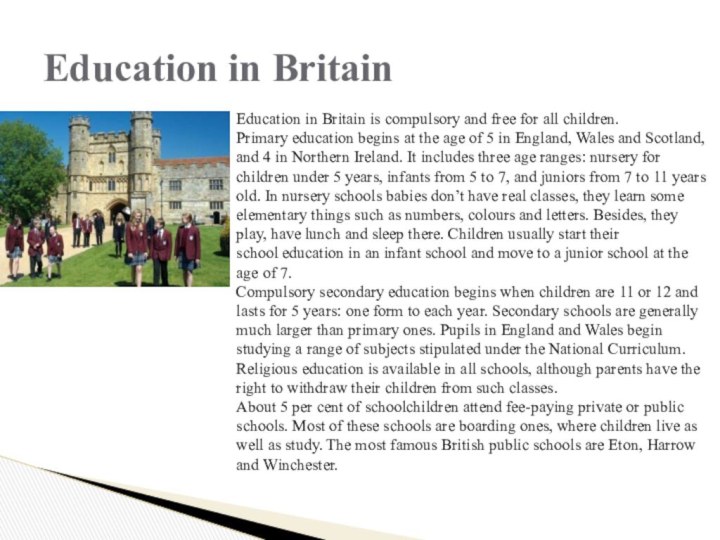
for all children.
Primary education begins at the age of
5 in England, Wales and Scotland, and 4 in Northern Ireland. It includes three age ranges: nursery for children under 5 years, infants from 5 to 7, and juniors from 7 to 11 years old. In nursery schools babies don’t have real classes, they learn some elementary things such as numbers, colours and letters. Besides, they play, have lunch and sleep there. Children usually start their school education in an infant school and move to a junior school at the age of 7.
Compulsory secondary education begins when children are 11 or 12 and lasts for 5 years: one form to each year. Secondary schools are generally much larger than primary ones. Pupils in England and Wales begin studying a range of subjects stipulated under the National Curriculum. Religious education is available in all schools, although parents have the right to withdraw their children from such classes.
About 5 per cent of schoolchildren attend fee-paying private or public schools. Most of these schools are boarding ones, where children live as well as study. The most famous British public schools are Eton, Harrow and Winchester.
Слайд 3
The large majority of British schools teach both

boys and girls together. But grammar schools, which give
state secondary education of a very high standard, teach boys and girls separately.
The school year in England and Wales starts in September and ends in July. In Scotland it runs from August to June and in Northern Ireland from September to June and has three terms. At 7 and 11 years old, and then at 14 and 16 at secondary school, pupils take examinations in the core subjects (English, Mathematics and Science).
The main school examination, the General Certificate of secondary education (GCSE) examination is taken at the age of 16. If pupils are successful, they can make their choice: they may either go to a Further Education College or a Polytechnic or they may continue their education in the sixth form. Those who stay at school after GCSE, study for 2 more years for "A' (Advanced) Level Exams in two or three subjects which is necessary to enter one of British universities. Universities usually select students basing on their A-level results and an interview. After three years of study a university graduate gets the Degree of a Bachelor of Arts, Science or Engineering. Many students then continue their studies for a Master's Degree and then a Doctor's Degree (PhD).
Слайд 4
1. At what ages must British children
stay at school?
2. What groups are state schools divided
into?
3. What is a private schools?
4. What do many young people do after leaning school?
5. What are the three types of universities in G.B.?
6. What grants do students receive?
7. Why don`t students have jobs during term time?
8. What is State schooling in the UK characterized by?
9. What are the stages of schooling in the UK?
10. What kind of school-leaving exams do children take at schools of different types?
11. Why do many parents send their children to fee-paying schools?
Answer the questions:
Слайд 5
Education in the USA
The system of education in
the USA varies greatly from state to state. School
education in so called state public schools is free. Parents are free to choose any public school for their children. Although there are a lot of private schools, mainly religious, and parents have to pay for them. A school year starts in September and ends in June. It is divided into three terms or four quarters.
American children start attending elementary schools at the age of 6. They continue their studies for eight years there (8 grades). Their basic subjects in the curriculum at this stage are English, Arithmetic, Natural Science, History, Geography, Foreign Language and some others. After that pupils may enter a Senior high school or if they go to a 5- or 6-year elementary school, they then attend a 3- or 4-year Junior high school, and then enter a Senior high school. Pupils graduate from high schools at the age of 18.
Слайд 6
The high schools (also known as secondary schools)
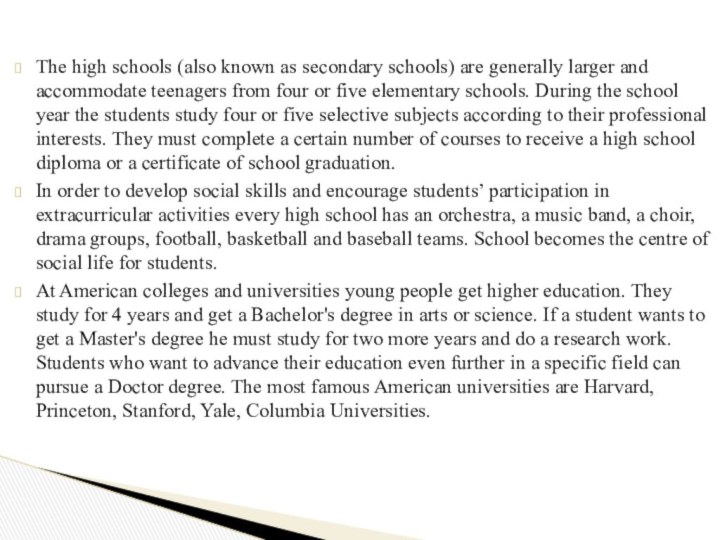
are generally larger and accommodate teenagers from four or
five elementary schools. During the school year the students study four or five selective subjects according to their professional interests. They must complete a certain number of courses to receive a high school diploma or a certificate of school graduation.
In order to develop social skills and encourage students’ participation in extracurricular activities every high school has an orchestra, a music band, a choir, drama groups, football, basketball and baseball teams. School becomes the centre of social life for students.
At American colleges and universities young people get higher education. They study for 4 years and get a Bachelor's degree in arts or science. If a student wants to get a Master's degree he must study for two more years and do a research work. Students who want to advance their education even further in a specific field can pursue a Doctor degree. The most famous American universities are Harvard, Princeton, Stanford, Yale, Columbia Universities.
Слайд 7
1. How can you characterize the organization of
school education in the USA?
2. What groups can schools
in the USA be divided into?
3. What subjects are taught at elementary school?
4. At what age do children study at high school?
5. What kind of education do high schools give?
6/ What proves that Americans show a great concern for education?
7. Why can you say that there`s no national system of education in the USA?
8. What are the stages of schooling in the USA?
9. What are the two main kinds of schools in the USA?
10. What is characteristic of American secondary education?
Answer the questions:
Слайд 8
Education in Russia
The system of education in Russia
is very much the same as in other highly
developed countries. It is based on the Soviet education, but it has been gradually changing since the creation of the new Russian state.
There are nurseries and kindergartens for little children aged from 2 to 6. The level of kindergartens has become considerably higher in recent years. Children play games, go for walks, have regular meals there. But the lessons of reading, arithmetic, drawing and other subjects have become more complicated than they were in the kindergartens ten years ago. There are the kindergartens where children learn foreign languages.
At the age of 6 or 7 Russian children go to secondary schools. Our children are also streamed into different forms according to their abilities. There are forms А, В and so on. The forms under the first two letters of the alphabet are for the cleverest pupils. The level of education in Russian secondary schools is rather high.
Слайд 9
Children receive primary education during the first three
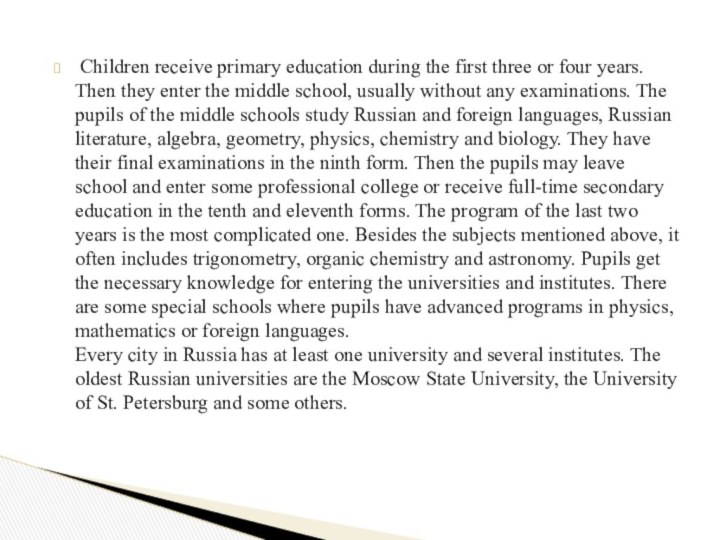
or four years. Then they enter the middle school,
usually without any examinations. The pupils of the middle schools study Russian and foreign languages, Russian literature, algebra, geometry, physics, chemistry and biology. They have their final examinations in the ninth form. Then the pupils may leave school and enter some professional college or receive full-time secondary education in the tenth and eleventh forms. The program of the last two years is the most complicated one. Besides the subjects mentioned above, it often includes trigonometry, organic chemistry and astronomy. Pupils get the necessary knowledge for entering the universities and institutes. There are some special schools where pupils have advanced programs in physics, mathematics or foreign languages.
Every city in Russia has at least one university and several institutes. The oldest Russian universities are the Moscow State University, the University of St. Petersburg and some others.
Слайд 10
1.What is the right to education in Russia
ensured by?
2. When do Russian boys and girls begin
to go to school?
3. What subjects do Russian children study at school?
4. Do Russian boys and girls go to school on Saturdays?
5. What are the stages of compulsory schooling in Russia?
6. What programmes of study do different types of school in Russia offer?
7. What is necessary for entering a higher education establishment?
8. What degrees can one get at a higher education establishment?
9. What is the structure of a university?
10. What famous universities do you know?
Answer the questions:
Слайд 11
Education in Australia
There exists a centralized national system
of education in Australia.
The top of this system is
the Federal Ministry of Education. But there are still many differences in the structure and the curricula of schools in different states. There exist two types of schools in the country: state schools and private schools. Tuition in state schools is free of charge. Private schools charge rather high fees. 80 % of Australian children go to state schools, and only 20 % attend fee-paying schools.
Слайд 12
School education is obligatory for all children from
6 to 15 years. At present the school education
scheme is “6+4+2” or “7+3+2”. Most children begin primary schools at the age of about five. Primary schools include from 1 to 6 or 7 grades. After the primary school children pass to the secondary school without examinations. Junior high schools comprise 4 or 3-year courses. After these courses students complete two year senior high school.
After senior classes of secondary schools students may enter any higher educational institution in the country. There is a tendency of cancelling final examinations in both junior and senior secondary schools. In this case more children, irrespective of their abilities, may receive secondary education. University admission is only after the senior secondary schools. Tuition fees differ from one state to another.
Слайд 13
1. How can you characterize the organization of
school education in Australia?
2. What groups of schools in
this country be divided into?
3. What subjects are taught at schools?
4. What are the stages of schooling in Australia. What kind of schooling –leaving exams do children take at schools of different types?
6. At what age do children study at a high school?
7.What kind of education do high schools give?
8. Why do many parents send their children to fee-paying schools?
9. What is necessary to go on to higher education?
Answer the questions:
